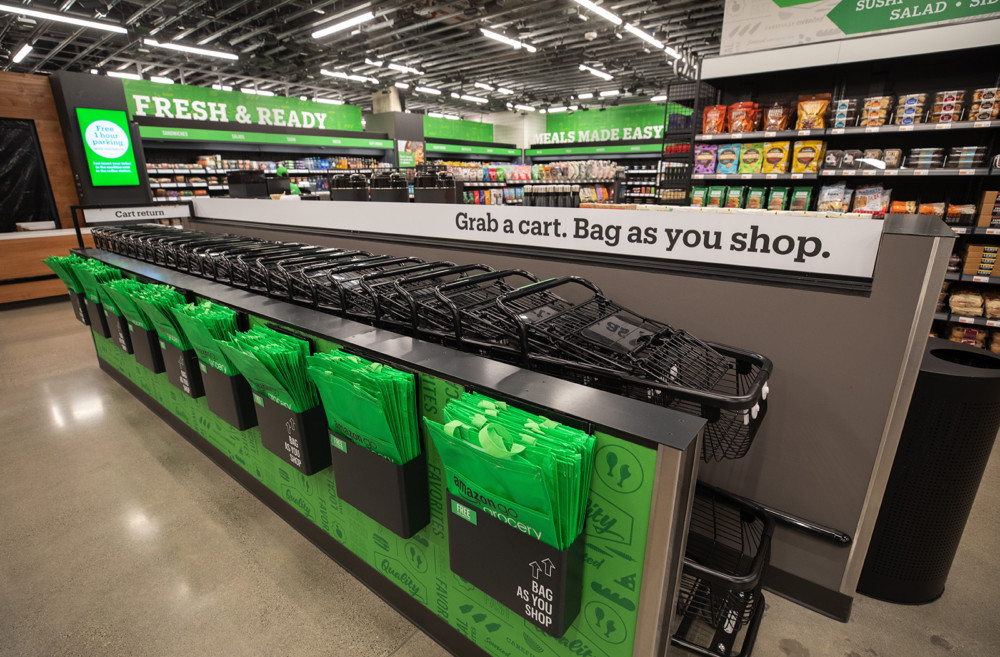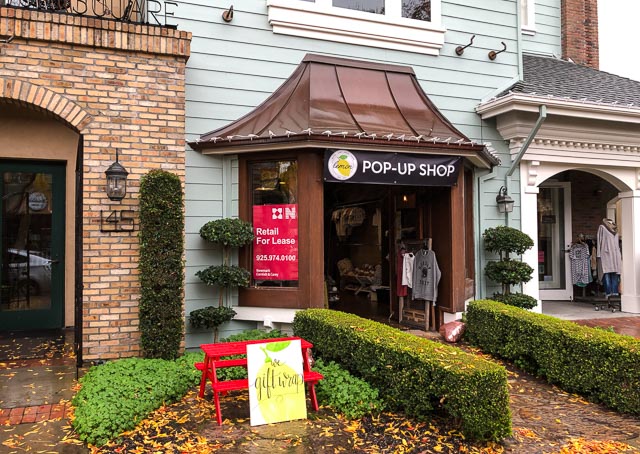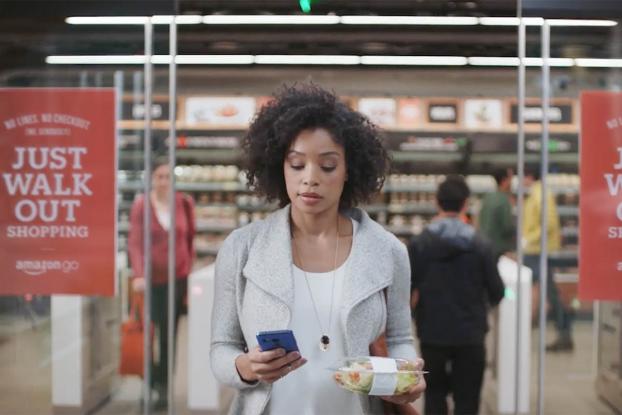By Paul Roberts
The Seattle Times
WWR Article Summary (tl;dr) The new “Amazon Go” store, uses cameras and data technology to automatically detect and record customers’ selections. No checkout needed.
SEATTLE
Amazon’s next step in its disruption of the grocery store business is rolling out in Seattle.
Amazon Go Grocery, the online retailer’s first checkout-free grocery store, opened Tuesday morning in a 10,400-square-foot space on East Pike Street between Belmont and Boylston avenues on Capitol Hill.
buy soft pack generic buy soft pack online no prescription
The new store, which has been hidden for weeks behind blacked-out windows, is a larger version of the company’s Amazon Go stores, which use sophisticated cameras and data technology to automatically detect and record customers’ selections without the need for cashiers.
While Amazon Go is essentially an upscale urban convenience store, Amazon Go Grocery will have a much larger inventory, around 5,000 items, that includes fresh produce, liquor, meat, seafood, premade meals, fresh-baked breads and pastries, and local specialties. A Go store carries around 1,000 items, according to media reports.
“Amazon Go was really focused on serving customers breakfast, lunch and snacks in urban central-business-district areas,” said Cameron Janes, an Amazon vice president who runs the company’s expanding fleet of physical stores. Amazon Go Grocery, by contrast, will have “everything you’d expect to find in a neighborhood market.”
Like the Go stores, the Go Grocery outlet requires customers to download the Amazon Go app, which lets them enter the store and provides a receipt for purchased items. And, like at Go, customers at Go Grocery can walk out with their purchases without stopping at a cashier, thanks to the store’s hundreds of ceiling-mounted cameras and sophisticated data analysis systems.
Aside from improved convenience, shoppers may see few other differences between Amazon Go Grocery and other upscale urban grocery stores, and that’s no accident, Janes said. Everything about the Go Grocery store, including its layout, inventory and especially its sensing technologies, is engineered expressly so that “customers don’t have to change the way they shop.”
Although Amazon has used checkout-free technology since 2016, making it available for such a wide range of products was a challenge. Customers handle items such as tomatoes or apples differently than they do packaged goods, Janes said, and typically pick up several before selecting the ones they want.
“You rummage,” said Janes. “So we needed to evolve our technology and improve it to really be able to handle all these new customer behaviors.”
Janes declined to specify the accuracy of its sensing technology. But after filling the space with Amazon employees pretending to be shoppers, Janes said the technology easily handled purchases even when the store was at full capacity.
“The only thing that will prevent people from coming in here, we think, is just that it’s too busy,” Janes said. “It won’t be our technology.”
Although it won’t have cashiers, Amazon Go Grocery will have plenty of employees, dressed in green, numbering “right around three dozen or so”, who will keep shelves replenished and provide customer service, Janes said.
Amazon Go Grocery is the latest in a series of moves the online retailer has made in the food business.
Amazon entered the traditional grocery market with its 2017 acquisition of Whole Foods, which will coordinate with Amazon Go Grocery for fresh produce and other items. Amazon has added other brick-and-mortar outlets with Amazon Go, Amazon Books and Amazon Four Star, which features items that have received four-star reviews or better online, as well as other products.
Amazon has been secretive about its grocery strategy. The company won’t say how many Amazon Go Grocery stores it plans to open, or even whether other Amazon Go Grocery stores are planned. A company spokesperson did confirm the Amazon Go Grocery concept is separate from yet another Amazon grocery initiative, reported by several media outlets last year, that will feature larger, more conventional grocery stores that use cashiers.
Those stores will be tested in Los Angeles.
But some retail industry observers expect Amazon to introduce its new grocery formats in several phases.
Jeff Green, a retail expert with Hoffman Strategy Group, speculates that Amazon’s grocery strategy will initially target niches in the grocery market, such as those now occupied by specialty players such as Trader Joe’s or Sprouts, or by locally owned neighborhood groceries.
Other retail experts think Amazon has much larger ambitions. The company, they say, is likely to tap the millions of Amazon Prime members it has in urban markets across the country to rapidly build the scale and market share it needs to compete directly with midmarket grocery chains.
“They’re going after conventional operators, the QFCs, the Safeways,” said one retail industry consultant who asked not to be named to protect a relationship with Amazon.
Experts say Amazon has used data gathered from its Whole Food operations to better understand where and how to target upscale customers with a more convenient format. Neil Stern, a senior partner at the Chicago-based retail analysis firm McMillanDoolittle, said that although the Whole Foods acquisition has not been a “game changer” in the grocery business, Amazon’s vast resources and its technological strength mean that its foray into new grocery formats bears watching.
“Anytime Amazon does something in this space, conventional grocery companies should be worried,” Stern said.
At the crowded Amazon Go store in South Lake Union, several customers said they were more than ready to try a larger version of Go, and had little sympathy for conventional grocery stores that couldn’t keep up.
“Automation in all avenues is here” to stay, said Adam Chambers, a construction project manager who had stopped by the Amazon Go for a quick lunch. “You either have to adapt or go the way of the dinosaur.”
___
Distributed by Tribune Content Agency, LLC.

















































































































































































































































































































































































